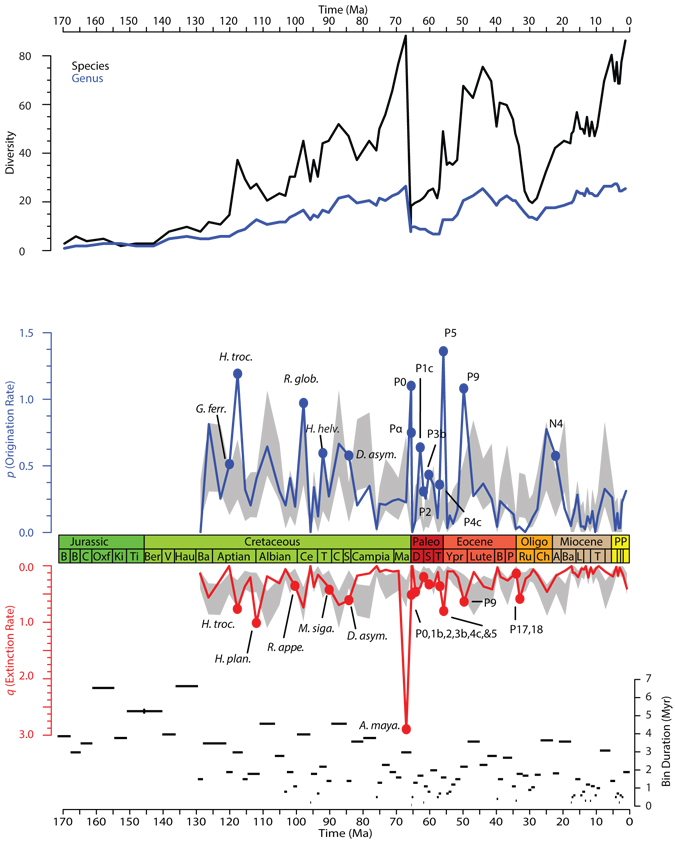
Full text loading...
Planktic foraminifera are an abundant component of deep-sea sediment and are critical to geohistorical research, primarily because as a biological and geochemical system they are sensitive to coupled bio-hydro-lithosphere interactions. They are also well sampled and studied throughout their evolutionary history. Here, we combine a synoptic global compilation of planktic foraminifera with a stochastic null model of taxonomic turnover to identify statistically significant increases in macroevolutionary rates. There are three taxonomic diversifications and two distinct extinctions in the history of the group. The well-known Cretaceous–Paleogene extinction is of unprecedented magnitude and abruptness and is linked to rapid environmental perturbations associated with bolide impact. The Eocene–Oligocene boundary extinction occurs due to a combination of factors related to a major reorganization of the global climate system. Changes in ocean stratification, seawater chemistry, and global climate recur as primary determinants of both macroevolutionary turnover in planktic foraminifera and spatiotemporal patterns of deep-sea sedimentation over the past 130 Myr.

Article metrics loading...

Full text loading...
Literature Cited


Data & Media loading...
Supplemental Material
Download Supplemental Methods (PDF). Download Supplemental Figure 1 as a PDF or see below. Supplemental Figure 1. Macroevolutionary history of the planktic foraminifera. (A) Diversity. Black line, species-level diversity, blue line genus-level diversity. (B) Origination rates, p (blue line). (C) Extinction rates, q (red line). Gray envelope shows the 95% confidence limit on rates derived from a randomization model. Zones with significantly high rates are highlighted with a filled circle and zone name (Table 1). (D) Bin duration in millions of years. 
